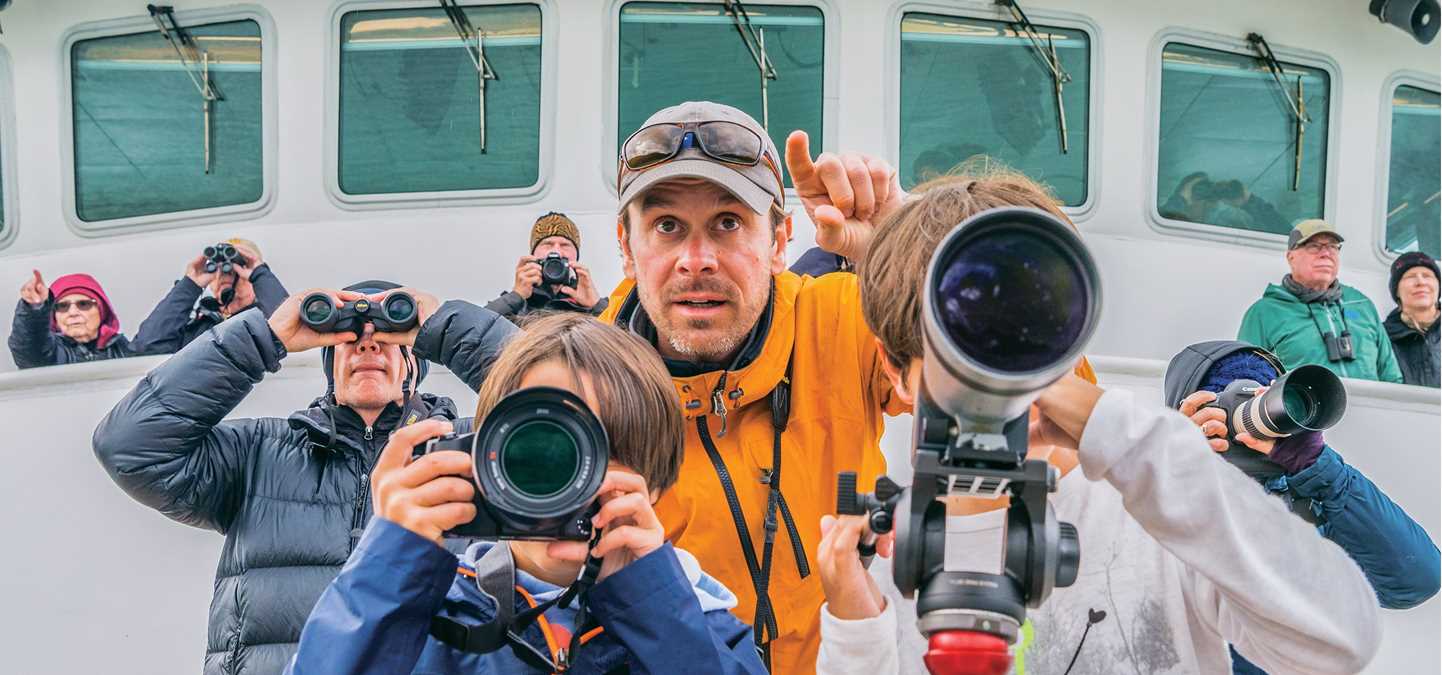Call +1300.361.012(AU) | 0800.444.462(NZ)
Photo
Certified Photo Instructor
“Shoot the light.”
It’s a simple tip. Dispensed from National Geographic photographer Ralph Lee Hopkins, who’s also the director of the expedition photography program for Lindblad Expeditions. But in this case it had two guests standing at the deck rail of National Geographic Sea Lion in Alaska ignoring some bears playing along the shore and shooting photos of the sun setting behind the Fairweather Mountain Range. The golden hour had painted the sea, forest, and snow-capped mountains in an unearthly hue of purple and blue. And just then, a humpback whale breached right in front of them, and they got the shot of a lifetime.
Light, focus, and composition. The three elements of photography are such simple concepts, but can take a lifetime to master. Lindblad Expeditions was founded by a photographer, and photography is at the core of everything they do. Sven Lindblad spent his formative years as a wildlife photographer in Africa, guiding guests across the plains and helping them get shots of their safaris. He has published several large format photography books with Rizzoli.
As part of the Expedition Photography program, every Lindblad-National Geographic expedition sails with a certified photo instructor. This is naturalist who is specially trained to offer assistance with camera settings, the basics of composition. Their goal is to help guests become better, more confident photographers—and to help them go home with some epic shots that tell the story of their journey.
Because these photographers are all trained naturalists, they have a big advantage over an instructor who is merely trained in camera use. They understand the habits of the wildlife guests are trying to photograph, so they can coach them in preparing for the shot of a bear fishing for salmon, an albatross surfing the air currents behind the ship, or a pod of killer whales hunting.
And sometimes, a simple tip like “shoot the light” combined with being in the right place at the right time nets you an epic, magazine-worthy shot.
“Shoot the light.” ...
Read more
Expedition staff are subject to change.

